A Short Introduction to the Xiangqi Manuals up till the Ming Dynasty
Written by Jim Png of www.xqinenglish.com
Note: This article first appeared on www.xiangqi.com
The culture of Xiangqi has been under-appreciated in the West. The main reason is that not much has been written about the topic or how it became one of the most popular pastimes in China. Early Western scholars interested in Xiangqi were more concerned about its origins, especially with relation to the roots of International Chess.
HJR Murray wrote in his A History of Chess the following passage: (1 pp. 129-130)
"At the present time the knowledge of chess is very widely spread through China, but the game is hardly held in the same esteem as in Europe. The more educated classes prefer Wei-k'i, which is considered to be a far more difficult game and skill at Wei-k'i is highly appreciated and adds greatly to the reputation of its possessor. But chess is the game of the masses, and is used more a means of passing away the time than as a serious mental exercise. A small stake is generally played for, the Chinese being a born gambler. At several points of the walls of Pekin inscribed chessboards may be found on the top of the ramparts, which have been carved by the soldiers who guarded the walls. Idlers and even beggars may be seen playing chess in the streets of any Chinese town, and the average standard of play remains low. The practical game is less popular than the study of problems, and while works on the latter abound, only a few treatises appear to be in existence which deal with the openings, or the game as a whole…
Nevertheless, the Chinese have in the past paid some attention to the theory of the Openings, though it is perhaps significant of the want of popularity of the game among the more educated classes that Mr. Wilkinson found that a book published nearly 300 years ago was still the standard Chinese work on the Openings…"
Murray would then continue to comment on the 'simplicity of Xiangqi as based on Wilkinson's work.
The author begs to differ.
After taking its current form no later than the Southern Song Dynasty (1127 – 1279AD), Xiangqi became so popular that it caused the 'extinction' of several other games like Prasaka, Hitting the Horse, et cetera.
There are many records of important people playing Xiangqi. Xiangqi has been recorded in the history books as an essential component of the humanities or as part of different cultural entities.
And, unlike what Murray was inclined to believe, there were many Xiangqi books and treatises on both endgame compositions (which Murray called problems) and opening theory. There were also writings in encyclopedias that introduced Xiangqi. Some even had a few endgame compositions.
Unfortunately, many of these ancient writings were lost in the sands of time. We know about the existence of these books/treatises on Xiangqi based on the catalog of books of different libraries, especially those of the imperial library.
There are approximately 37 ancient writings that are still extant.
In this article, the author defines an ancient manual as any writing piece that concerned Xiangqi and was written or published before 1911. 1911 marked the fall of the Qing Dynasty, which was the last of the imperial dynasties in China. There are some 'ancient manuals' that are available even today that are very questionable. The following ancient manuals discussed are based on the information given in the Encyclopedia of Xiangqi Manuals, which remains the golden standard on the topic. (2)
Because of the amount of information still available, the introduction to ancient manuals has been limited to the still extant manuals. Many of these have been republished and abridged in modern times. This article will focus on the earliest known writings on Xiangqi up till the end of the Ming Dynasty.
The contents are as follows:
- Southern Song Dynasty 1127 – 1279AD
- Shi Lin Guang Ji.
- Ming Dynasty 1368 – 1644AD
- One Hundred Variations of Xiangqi
- Dreams of Divine Positions.
- Elegant Pastime Manual
- A Secret Record of Xiangqi
- Invincible After Coming Out of the Caves
- Sancai Tuhui
- The Secret in the Tangerine
- Summary
Southern Song Dynasty 1127 – 1279AD
Shi Lin Guang Ji.
《事林广记》 shì lín guǎng jì
Year: 1266 AD
Author: Chen Yuanjing (陈元靓,?-? chén yuán jìng)
Notes:
The earliest record of Xiangqi with two games and one problem is found in Shi Lin Guang Ji.
Original works are lost, but the encyclopedia has been reprinted several times, with versions being kept in Japan.
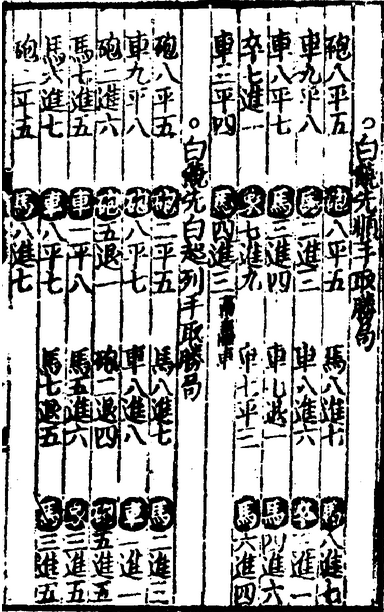
Chen Yuanjing's records of two games (3)
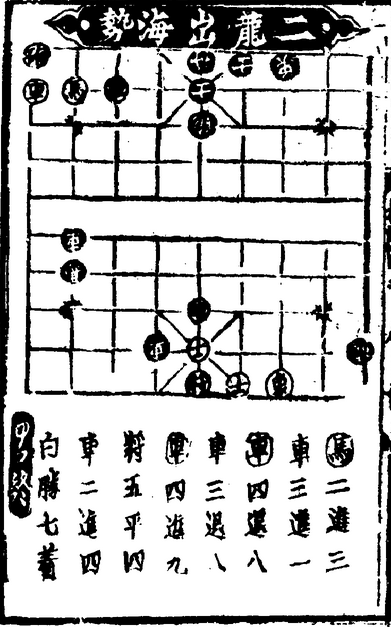
Chen Yuanjing's earliest record of a Xiangqi puzzle (4)
The author has also devoted a webpage to this vital piece of history and culture. The URL of the webpage is:
http://www.xqinenglish.com/index.php/en/ancient-xq-manuals/268-2020-07-03-07-15-51
The boards and games are discussed there.
Ming Dynasty 1368 – 1644AD
Xiangqi reached a peak during the Ming Dynasty. Initially forbidden by the founding Emperor, Xiangqi became so well embraced by the masses that many ancient games fell into extinction. There were people everywhere that played Xiangqi.
One Hundred Variations of Xiangqi
《百变象棋谱》 bǎi biàn xiàng qí pǔ
Year: 1522 AD?
Author/Editor: Zulong Shi(祖龙氏?-?, zǔ lóng shì)
Notes: (5 pp. 307-313)
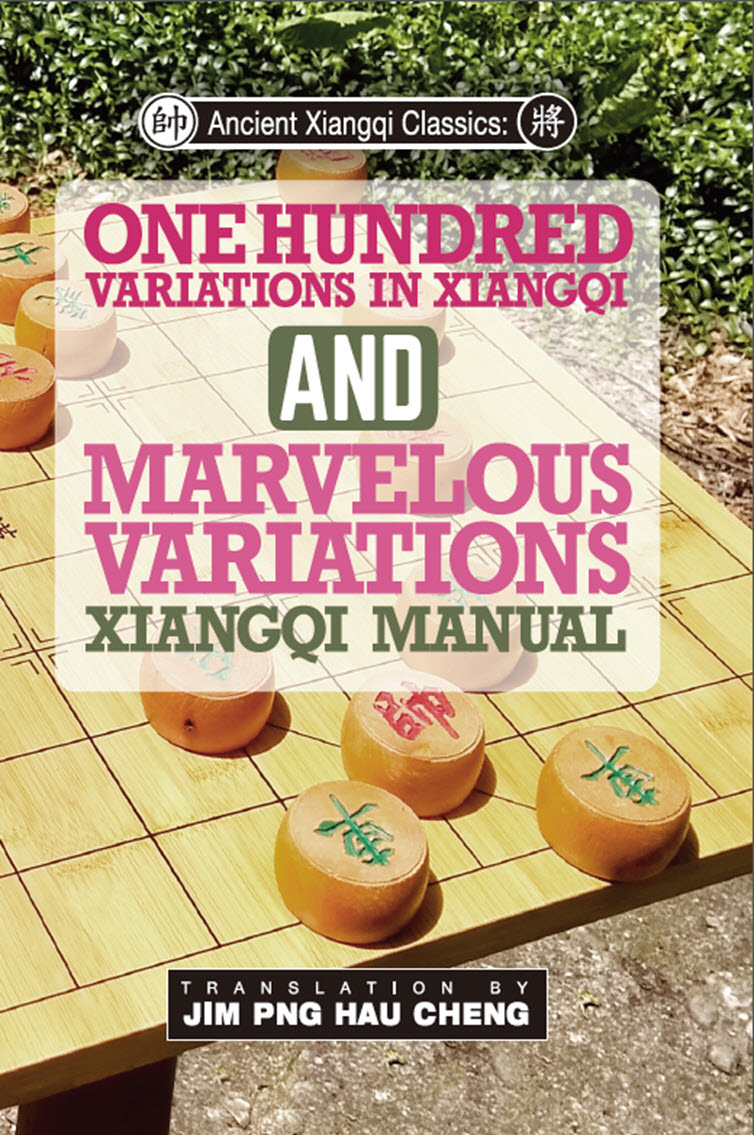 The original Xiangqi manual is believed to be one of the earliest and most complete ancient manuals. There were reprints from the Qing dynasty that were similar to the Ming Dynasty version. However, some questions have been raised about the date of the publication of the book. Professor Zhang Ru-an believed that One Hundred Variations of Xiangqi was not a Ming Dynasty manual. Instead, it was a Qing Dynasty manual pitched as a Ming Dynasty manual by the people selling books.
The original Xiangqi manual is believed to be one of the earliest and most complete ancient manuals. There were reprints from the Qing dynasty that were similar to the Ming Dynasty version. However, some questions have been raised about the date of the publication of the book. Professor Zhang Ru-an believed that One Hundred Variations of Xiangqi was not a Ming Dynasty manual. Instead, it was a Qing Dynasty manual pitched as a Ming Dynasty manual by the people selling books.
There are seventy extant problems that the author has published in English. The original puzzles consisted of eight puzzles where Red would win, and these puzzles made up one of the volumes. The remaining sixty-two puzzles were draws, and they made up another volume.
These problems were later incorporated into other ancient manuals of a later date. The ancient manual was also interesting because the colors were reversed compared to other ancient manuals; Black moved first. The Chinese character for the Cannon piece was 包 (bāo ) instead of 炮 or 砲. The moves were also recorded descriptively. For example, a move would be 车进将 (the Chariot advances for the check), 马河界 (Horse advances to the riverbank) et cetera.
Please be reminded that One Hundred Boards of Xiangqi, which was written later, and One Hundred Variations of Xiangqi are two different manuals.
The book has been translated into English by the author.
Dreams of Divine Positions.
《梦入神机》 mèng rù shén jī
Year: Ming Dynasty. Unknown but before 1566 AD (5 p. 252)
Author: Unknown.
Notes:
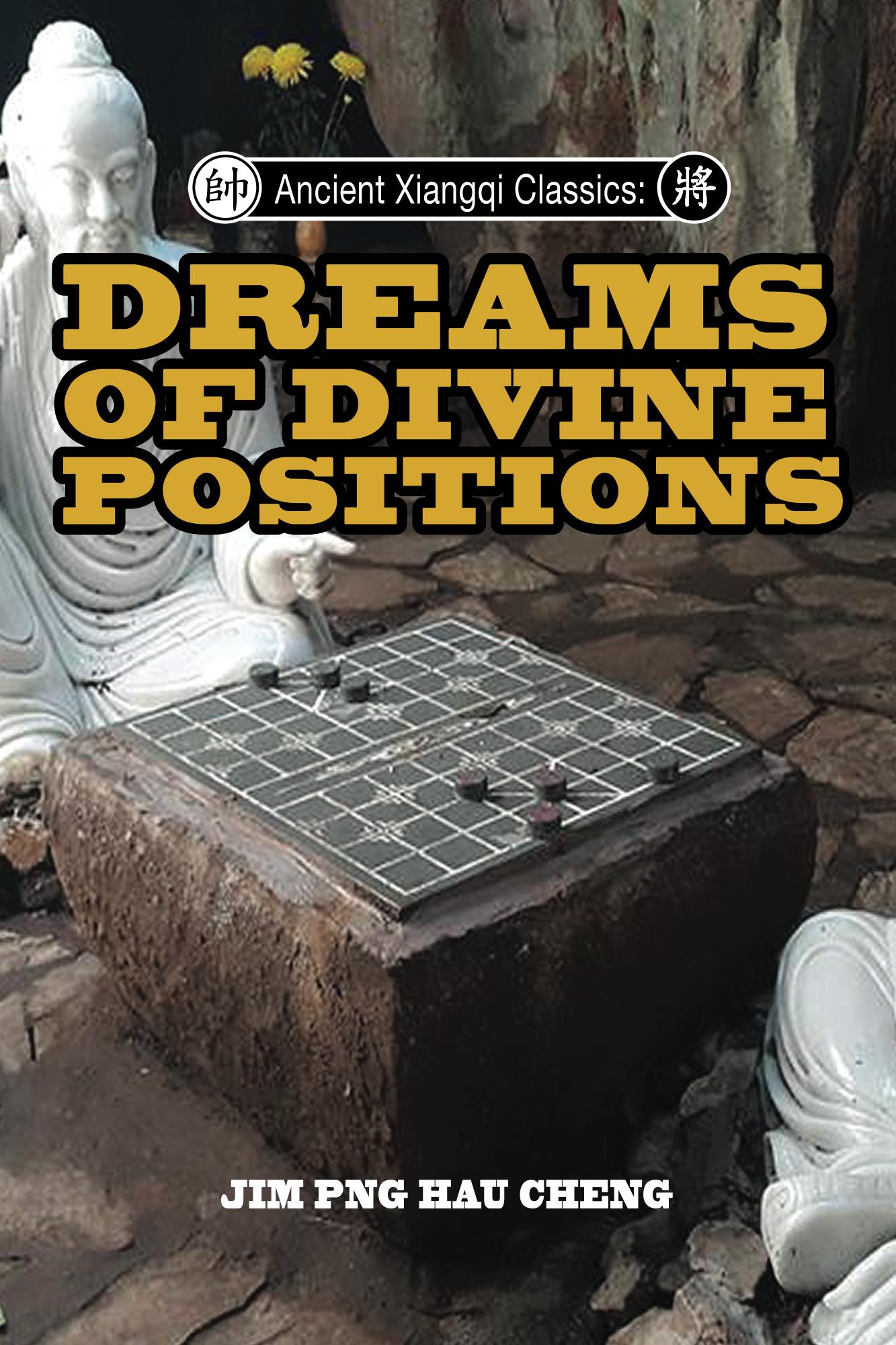 Partially Extant. Original work is thought to be Ten Volumes with a catalog of books from ancient times to prove it. Only parts of the first three volumes are still extant. The old manual was rediscovered in the 20th century at a grocery store where it was used to wrap goods. The still extant ancient manual consists of about one hundred and fifty problems. No records of whole games can be found, although prologues from other ancient manuals suggest otherwise.
Partially Extant. Original work is thought to be Ten Volumes with a catalog of books from ancient times to prove it. Only parts of the first three volumes are still extant. The old manual was rediscovered in the 20th century at a grocery store where it was used to wrap goods. The still extant ancient manual consists of about one hundred and fifty problems. No records of whole games can be found, although prologues from other ancient manuals suggest otherwise.
There are one hundred and forty and four problems that are still extant and unique to the ancient manual. The author has translated and published in English. The late Zhu Nanxian from the 20th century believed that the entire book consisted of at least 700-800 puzzles. (5 p. 253)
Although most of the puzzles still seemed relatively simple by today's standards, they were significantly trickier than the puzzle in Shi Lin Guang Ji. It is believed that many of the puzzles in Dreams would serve as the 'backbone' of other ancient manuals that inspired future generations of endgame specialists.
The author has translated the entire book (or remains that are still extant) into English.
Elegant Pastime Manual
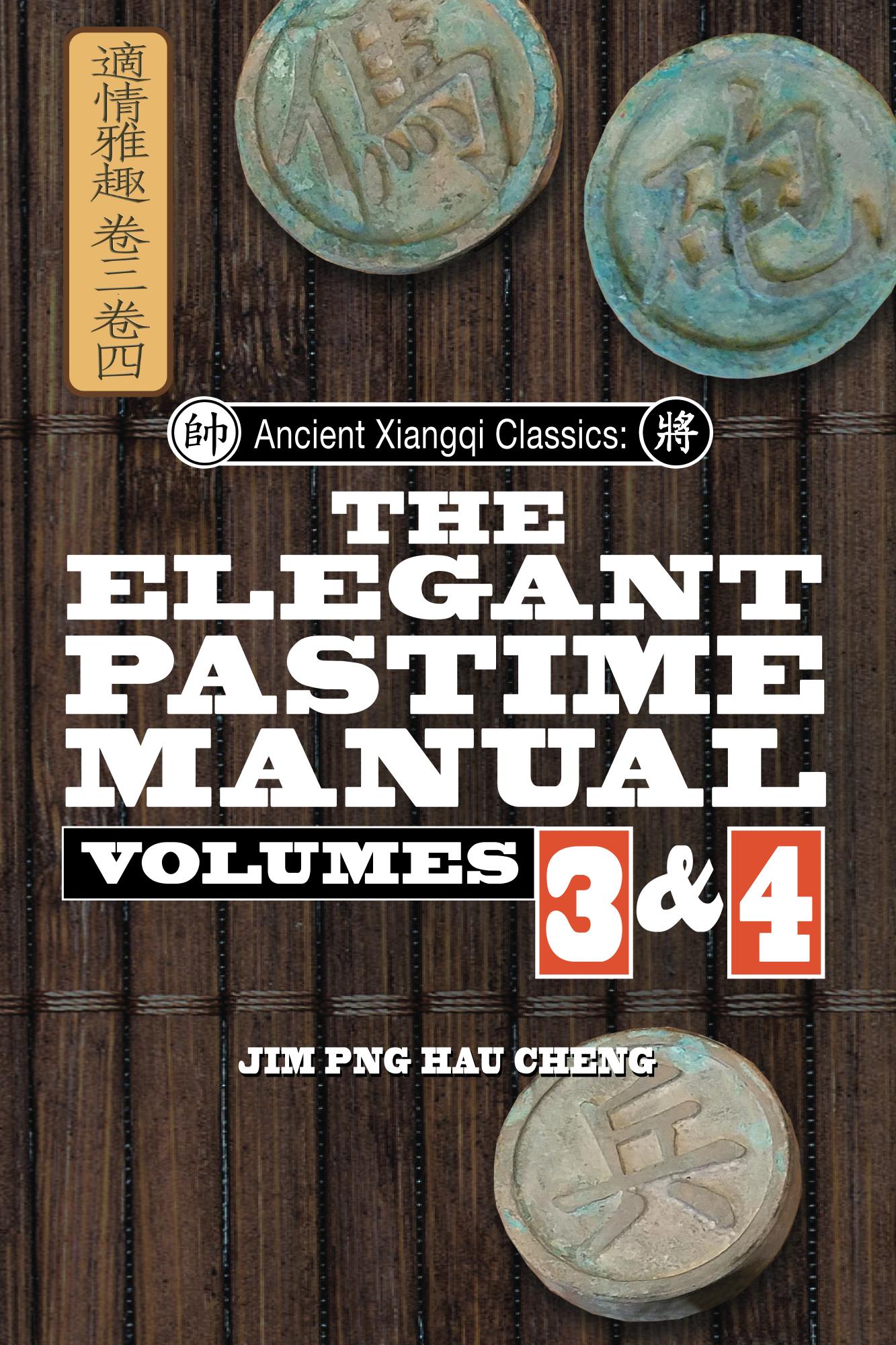 《适情雅趣》 shì qíng yǎ qù
《适情雅趣》 shì qíng yǎ qù
Author/Editor: Xu Zhi (徐芝 xú zhī)
Year: 1570 AD
Notes:
The Elegant Pastime Manual most extensive and comprehensive ancient manual that is still extant. There were ten volumes to the ancient manual, which were divided into eight scrolls. Volumes 1-6 consisted of 550 endgame compositions where Red won in the vast majority.
In some versions, there were 551 endgame compositions. Board 227 only had the moves but no diagram. Some modern-day endgame specialists have tried to 'reverse-engineer' the original puzzle based on the moves given.
Volumes 5 and 6 have to be mentioned because they contained specific endgame situations, which would later be evolved into the practical endgames that we have today. Systemic analyses of various endgame situations were already present at that time. Volumes 7-8 contained the moves or the answers to the puzzles.
Volumes 9 and 10 contained analyses of games, presumably from the 18 Stances of the Golden Roc (《金鹏十八变》 jīn Péng shí bā biàn).
Hints were given to the puzzles.
It also contained some of the earliest advice on Xiangqi called Theory of Xiangqi (《棋经论》 qí jīng lùn).
Together with the Secret in the Tangerine and Plum Flower Manual (by Wang Zaiyue), these three ancient manuals are held in the highest regard of all the ancient manuals that are still extant.
The author is proud to say that he has translated the contents of the first six volumes (550 puzzles) into English.
A Secret Record of Xiangqi
《棋谱秘录》qí pǔ mì lù
Year:Unknown, but believed to be slightly later than the Elegant Pastime Manual
Author/Editor: Fu Wangzhong 傅万钟 (fù wàn zhōng) and Zuo Ting (佐廷 zuǒ tíng)
Notes:
A Secret Record of Xiangqi contained puzzles that were divided into three volumes:
- Qian Volume (乾 qián, 71 puzzles),
- Kun Volume (坤 kūn, 68 puzzles), and
- He Volume (和hé, 67 puzzles)
Many of the puzzles in the Qian and Kun Volumes overlapped with the One Hundred Variations in Xiangqi and the Elegant Pastime Manual.
Many of the puzzles found in the He Volume would later become incorporated into Strategic Considerations.
The style of the book was similar to One Hundred Variations of Xiangqi.
Invincible After Coming Out of the Caves
《自出洞来无敌手》 zì chū dòng lái wú dí shǒu
Author/Editor: Priest Chun Yang (纯阳道人 chún yang dào rén)
Year: Slightly after 1601 AD (5 p. 259)
Notes: (5 pp. 259-265)
The Invincible Manual remains one of the earliest Xiangqi ancient manuals to date. It was believed to have been written slightly later 1601AD as the ancient manual was not found in a catalog of books written that year. It started appearing in later catalogs. (5 pp. 259-260)
Although the name of the old manual was full of grandeur, the level of Xiangqi that was exhibited was comparatively easy. The title of the ancient manual was derived from its contents, where each Chinese character represented a chapter devoted to a particular opening. The names of the opening system were unique to the ancient manual and were not used in other literature, but they are variants of commonly played lines.
The contents were:
- Zi Volume (自zì, 信手炮 xìn shǒu pào);
- Chu Volume (出chū, 列手炮 liè shǒu pào)
- Dong Volume (洞dòng, 入手炮 rù shǒu pào);
- Lai Volume (来lái, 顺手炮 shun shǒu pào);
- Wu Volume (无wú, 袖手炮 xiù shǒu pào);
- Di Volume (敌dí, 出手炮 chū shǒu pào)
- Shou Volume (手shǒu, 应手炮 yìng shǒu pào).
There were five boards per chapter. Thus, the entire ancient manual consisted of 35 boards that discussed opening theory and whole games. There were magnificent kills that represented the romantic style of play which was predominant at that time.
The Invincible Manual was also interesting in that it adopted a 'coordinate' approach. A poem consisting of ninety unique Chinese characters was used whereby a Chinese character represented each intersection on the board.
As with the Secret in the Tangerine, the predominant theme was the Same Direction Cannons and the Opposite Direction Cannons. There were also discussions of the Central Cannon vs. Single Horse Defense. There was also considerable overlap with similar boards in the Secret in the Tangerine and the Plum Flower Manual by Wang.
There was also some simple advice on playing the game, which was unique to the ancient manual.
This ancient manual has been translated into several different English books by contemporary authors like CK Lai from England, who called it "Victories all the Way," and Wong Ping Loong from Malaysia, who called it "The Xiangqi Master from the Cave." The author had helped Wong in the preparation of his script.
Sancai Tuhui
《三才图会》 sān cái tú huì
Author/Editor: Wang Qi (王圻wáng qí) and Wang Si (王思wáng sī)
Year: 1609AD
Notes:
San Cai Tu Hui was an encyclopedia compiled by the father and son duo of Wang Qi and Wang Si (son). The title of this encyclopedia has been variously translated into English as "Illustrations of the Three Powers," "Collected Illustrations of the Three Realms," "Pictorial Compendium of the Three Powers," and others. In the original title, "Sancai" (三才) refers to the three realms of "heaven, earth, and man," and "Tuhui" (图会) means "collection of illustrations." (6)
In the scroll for the 'Man' section, there were Xiangqi diagrams, puzzles, and information on how to play Xiangqi.
The Secret in the Tangerine
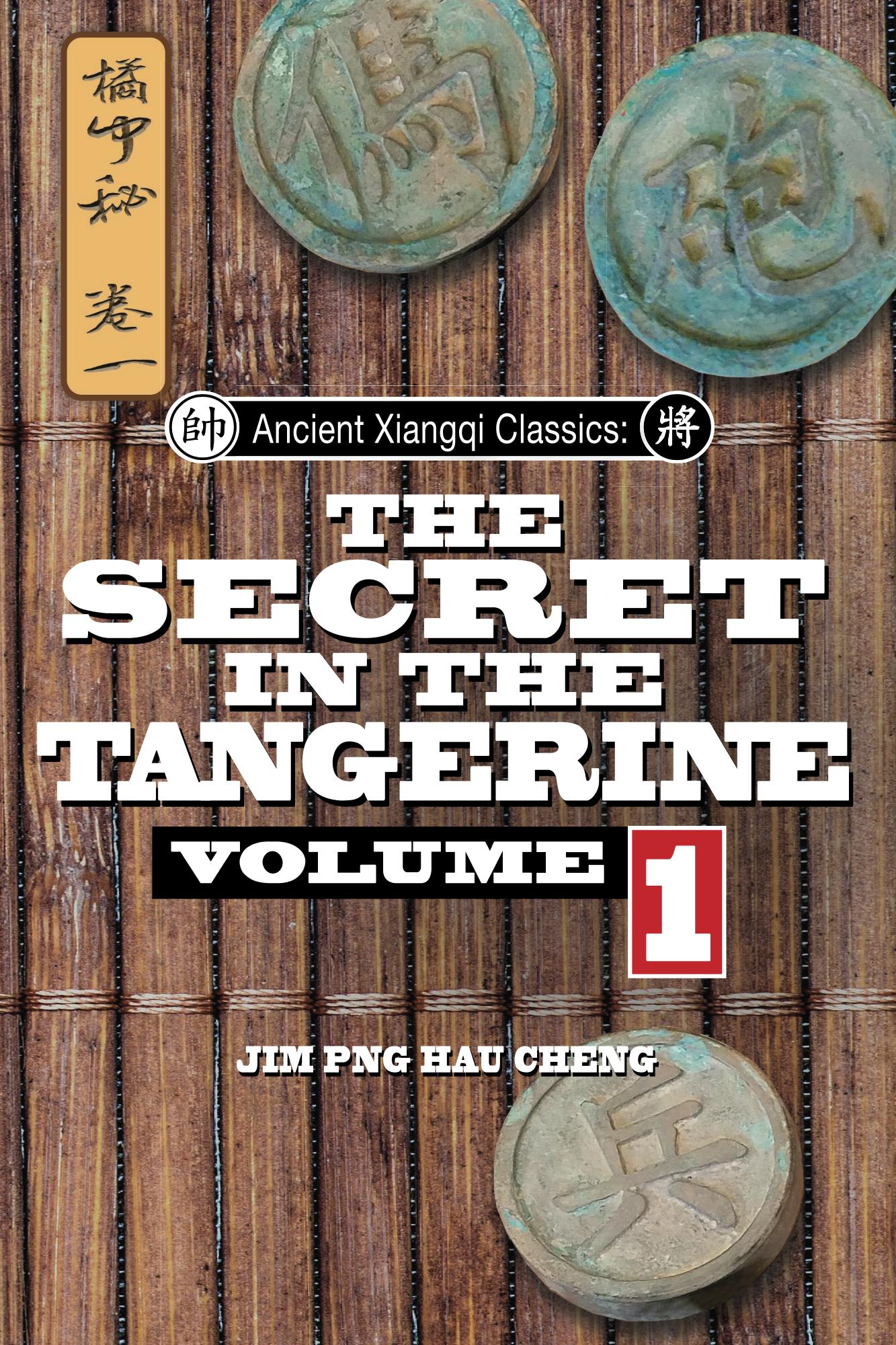 《桔中秘》 jú zhōng mì
《桔中秘》 jú zhōng mì
Author/Editor: Zhu Jinzhen (朱晋桢zhū jìn zhēn)
Year: 1632 AD
Proofread by: Zhu Erye (朱尔邺zhū ěr Yè) and Zhu Jingxiao (朱景萧 zhū jǐng xiāo)
Notes: (5 pp. 270-277)
Perhaps the most influential of the ancient manuals, the Secret in the Tangerine was divided into four scrolls. The book's name was taken after the supernatural story written by Tang Dynasty Prime Minister Niu Sengru.
Scroll One contained 20 boards where Red would gain the upper hand. The main opening system discussed was the Same Direction Cannons. Contrary to popular belief that the Screen Horse Defense began with Wang's Plum Flower Manual, the Secret in the Tangerine contained a lone board where the Screen Horse Defense made its debut.
Scroll Two contained boards where Black would gain the upper hand.
Scrolls Three and Four contained a total of 133 boards which were mostly refined practical endgame situations from the Elegant Pastime Manual. There were a few puzzles that were unique to the Secret in the Tangerine.
There was also some theory on Xiangqi which were almost identical to the Elegant Pastime Manual.
Xiangqi historians have long considered the Secret in the Tangerine to mark the end of the Xiangqi whereby the Central Cannon was the preferred opening for both Red and Black.
The Secret in the Tangerine has been translated into other English names: the Secret in the Orange by contemporary authors and the Secret in the Orange Grove. However, the author believes that the Tangerine will be the most accurate translation.
WH Wilkinson wrote the first English Xiangqi treatise in 1893 based on the book. Wilkinson translated most of the contents and sub-variations into English and used exciting names like the Giuoco Piano to refer to opening systems. Wilkinson's work would be later mentioned and cited in HJR Murray's A History of Chess (1).
The author is also proud to say that he has translated the book into English.
Summary
Contrary to what Murray wrote, many Xiangqi manuals, treatises, books on problems, et cetera had been reported since the Southern Song Dynasty. While most of these books were indeed books on problems (endgame compositions, as Murray mentioned), books on openings were not lacking. There was also rudimentary Xiangqi theory on the opening, endgame, and advice on playing the game.
The author is trying to get all the ancient manuals translated in this lifetime to preserve the culture of Xiangqi.
References
1. Murray, HJR. A History of Chess ( 1913 Orginal Edition). New York : Skyhorse Publishing, 2012. reprint. 978-1-63220-293-2.
2. 程明松, 杨明忠 和 屠景明. 中国象棋谱大全. 成都 : 成都时代出版社, 2007 重印. 页 1788. 9787805485294.
3. (南宋)陈元靓. Library -> 新编纂图增类羣书类要事林广记 -> 新编纂图增类羣书类要事林广记九 30/141. 诸子百家 Chinese Text Project. [Online] Feb 25, 2020. https://ctext.org/library.pl?if=gb&file=35640&page=30&remap=gb.
4. —. Library -> 新编纂图增类羣书类要事林广记 -> 新编纂图增类羣书类要事林广记九 31/141. 诸子百家 Chinese Text Project. [Online] [Cited: Feb 25, 2020.] https://ctext.org/library.pl?if=en&file=35640&page=31&remap=gb.
5. 张, 如安. 中国象棋史. 北京 : 团结出版社, 1998. 7-80130-170-6.
6. contributors, Wikipedia. Sancai Tuhui. Wikipedia, The Free Encyclopedia. [Online] Page Version ID: 1018433329, Apr 18, 2021. [Cited: May 3, 2021.] https://en.wikipedia.org/w/index.php?title=Sancai_Tuhui&oldid=1018433329.
